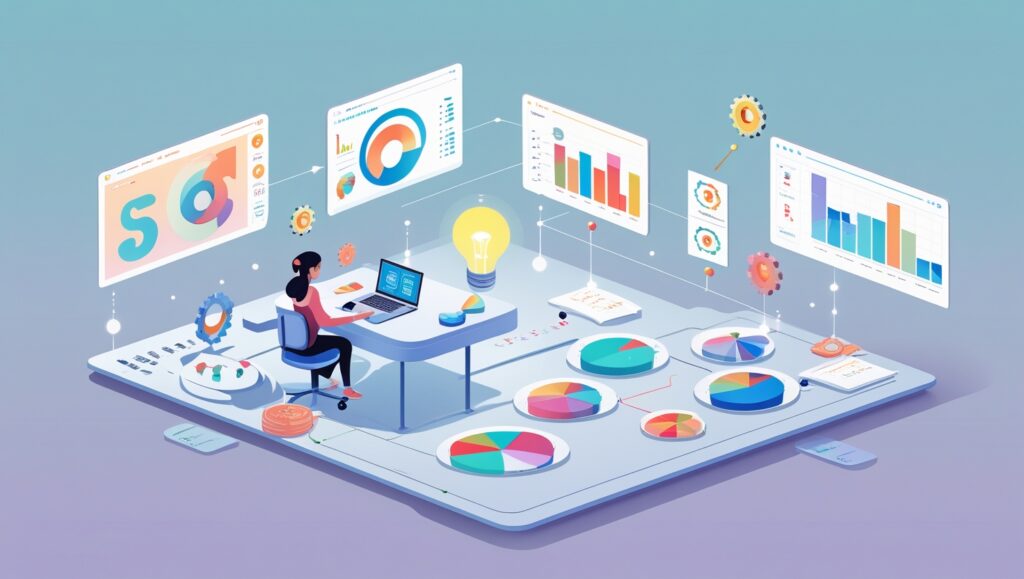72nd & Struggling: What’s Holding India Back in Global AI Race?
Country’s AI readiness is less bout falling behind and more about failing to align their infrastructure, policies, and talent with the future they want to create. 72nd & Struggling: What’s Holding India Back in Global AI Race? May 8, 2025 By Sagarika Chikhale Artificial Intelligence (AI) is no longer a futuristic concept; it’s rapidly reshaping economies, societies, and governance worldwide. For a nation like India, with its vast potential and aspirations, harnessing AI effectively is crucial for future growth and development. However, a recent analysis based on the 2023 AI Preparedness Index (AIPI) places India at 72nd globally. While India is making strides, this ranking signal a significant gap compared to leading nations. This isn’t just about technology; it’s about the entire ecosystem supporting it. The analysis reveals that national AI preparedness isn’t solely driven by GDP, but more profoundly by foundational pillars: Digital Infrastructure, Regulation & Ethics, Human Capital, and Innovation. Understanding where India stands on these fronts, based on the 2023 data, is key to charting a path forward. Why Are Some Countries More Prepared Than India? The analysis highlights stark correlations between AI readiness and specific national capabilities: Digital Infrastructure (Correlation with AIPI: 0.96): This is the bedrock. It’s not just about having internet users but the quality, reach, and robustness of the entire digital ecosystem like high-speed connectivity, cloud computing capacity, data centers, and crucially, secure servers (correlation with AIPI is 0.46, indicating this specific area might be less dominant but still part of the whole). Nations leading the AIPI charts (like Singapore, Denmark, US) boast highly mature, reliable, and widespread digital infrastructure. Regulation & Ethics (Correlation with AIPI: 0.94): Trust is paramount. Countries with clear, well-defined, and enforced regulations governing AI including covering data privacy, algorithmic transparency, accountability, and ethical use, are far better prepared. Strong governance builds public confidence and provides a stable environment for AI deployment and innovation. This factor is almost as critical as infrastructure. Again Singapore, Denmark, US and with other countries having high AIPI are leading in this area. Human Capital & Labor Market Policies (Correlation with AIPI: 0.91): AI needs skilled people, not just elite coders, but a broad workforce capable of developing, deploying, managing, and working alongside AI systems. This requires strong education systems, continuous learning programs, AI-specific training, and labor policies that support transitions and reskilling. Innovation & Economic Integration (Correlation with AIPI: 0.88): A thriving AI nation needs a dynamic innovation ecosystem like robust R&D, vibrant startups, strong university-industry links, and active participation in the global technology landscape. This fosters the creation and adoption of cutting-edge AI solutions. US is a remarkable example of this as it has also exceptional history in aerospace industry. The GDP Factor: While GDP per capita shows a strong positive correlation (0.79) indicating wealthier nations can invest more in these pillars however GDP growth shows a weak negative correlation of -0.19 with AIPI. This is crucial: rapid economic expansion alone doesn’t guarantee AI readiness. Targeted, strategic investment in the core pillars matters more than sheer growth momentum. India’s AI Adoption: Where are the Key Bottlenecks? Applying this framework to India’s 72nd rank (based on 2023 data) reveals specific areas needing attention: Digital Infrastructure – Beyond Access: India has made enormous strides in digital access (internet users, mobile penetration). However, the analysis’s distinction between access and overall infrastructure quality is pertinent. Many users, even in major cities like Mumbai, experienced inconsistent speeds, patchy reliability, and latency issues. Furthermore, areas like high-performance computing infrastructure, widespread fiber connectivity, and data center density likely lag behind top-ranked nations. While initiatives like Digital India are foundational, the quality and uniformity of infrastructure across the nation require significant upgrades to truly support large-scale, sophisticated AI deployment. Secure server infrastructure might also need bolstering, though the primary focus should be on the broader ecosystem quality. Regulation & Ethics – The Need for Clarity and Speed: India is actively discussing AI regulation, but a comprehensive, clear, and agile framework is still evolving. The high correlation of Regulation & Ethics with AIPI underscores the urgency. Ambiguity can stifle innovation and deployment, while inadequate safeguards risk eroding public trust. Striking the right balance between fostering innovation and ensuring ethical, responsible AI use through robust policies is critical. Human Capital – Converting Potential into Skill: India has a vast pool of young talent and a strong IT services sector. However, translating this demographic potential into AI-specific skills on a scale is a challenge. This involves curriculum reform in universities, scaling up vocational training for AI technicians and data analysts, and promoting widespread digital literacy for the broader workforce. The 0.91 correlation highlights that readiness depends on having people who can build and use AI effectively across all sectors. Labor policies also need to adapt to support workers whose jobs might be transformed by AI. Innovation Ecosystem – Deepening and Broadening: While India has innovation hubs and a booming startup scene, translating research into widespread commercial application and fostering deep-tech AI innovation requires further strengthening. Boosting R&D investment (both public and private), extreme simplifying processes for startups, and enhancing collaboration between academia and industry are vital. The 0.88 correlation suggests that a more deeply integrated and innovative economy is essential for AI leadership. Targeted Investment over Relying on Growth: India’s economy is growing, but the analysis cautions against becoming too comfortable, noting a -0.19 correlation with GDP growth. We see examples reinforcing this globally; for instance, a nation like Armenia might experience significant economic expansion yet exhibit AI preparedness levels comparable to India’s with 0.49, demonstrating that growth alone doesn’t guarantee advanced readiness. Conversely, it’s also observed that some nations with more moderate or even slower economic growth can achieve remarkably high AIPI rankings. This underlines that strategic focus often matters more than sheer growth velocity. Therefore, the resources generated by India’s growth must be strategically channeled into the foundational pillars such as enhancing infrastructure quality, building robust regulatory capacity, implementing nationwide skilling programs (although not enough), and boosting R&D. Relying on
72nd & Struggling: What’s Holding India Back in Global AI Race? Read More »







